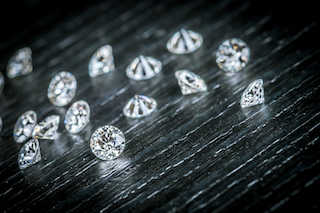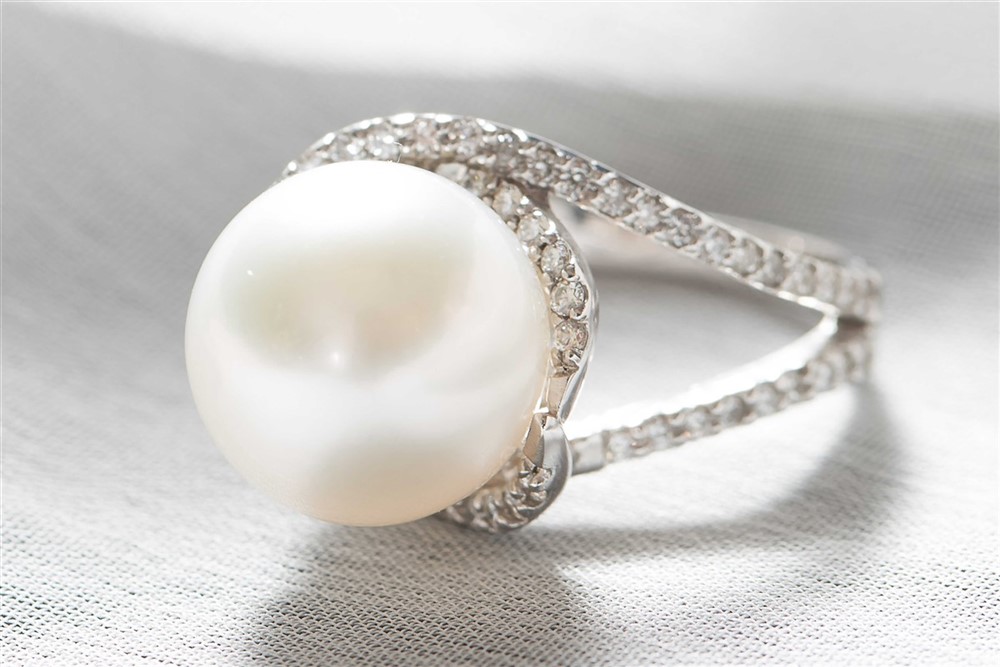Prince, that gem of pop who proved that size really has no bearing on greatness, was onto something when he wrote his number one song, ‘Diamonds and Pearls’. Beyond the fact that ‘pearls’ rhymes with girls, recent research has determined that these two gemstones can be very, very closely related.
It begins with their basic ingredient. Carbon. Carbon is the building block of life. Break us humans down to our basic constituents, and we are around 18% carbon. Anything from the food on your plate, the wood of the trees, the cat on your lap, is going to contain a healthy chunk of the element too.
Neither a pearl nor a diamond lives or breathes, but they do have carbon in common. Diamonds are super-hard crystals formed of the element carbon. Pearls are little spherical delights composed of layers of tiny little crystals of calcium carbonate, known as nacre.
But it gets better. Stand up. Diamonds were formed somewhere between 140km and 1000km below you, some one to three billion years ago. There are doubtless a fair few budding in the dark as we speak. These diamonds need to get their carbon from somewhere, right? The scientists have been digging around in some of the gems that formed in the deepest parts of our planet, and they have discovered that a small number were formed from the carbon-rich debris that once littered the ancient sea floor, when it was pulled into the earth as its crust cracked and collided. Undoubtedly, that would include the odd pearl-bearing oyster. So, I would not be lying if I said that there are diamonds out there that were born from the pearls they are so often paired with in jewellery. Nice thought, isn’t it. Diamond being the daughter of a pearl.
Regardless of this quirky connection, these two gemstones could not be less alike.
What is a pearl?

A little myth-busting. It has nothing to do with a grain of sand. We have already established that pearls are formed of layers of nacre. The nacre is produced by a specific set of cells in the living tissue of a sea or fresh-water mollusk, called the mantle. If the mantle is damaged, a few of these nacre-producing cells can find themselves in the wrong place. None-the-less, they will get on with their job, until a little ball of nacre forms, getting bigger and bigger as time rolls by. Boom. Pearl.
The pearl, as a gemstone, is unique, as it requires no help from us to look as good as it does. And there are numerous types, in numerous colours, including but not limited to the classic natural sea-water pearl, the clam pearl, the freshwater mussel pearl and the conch pearl. All of them born out of an injured mollusk. But the rarest and most valuable are those white spherical pearls found in the Arabian Gulf, from the Pinctada Radiata oyster. The Gulf is the oldest source of natural sea water pearls, with the earliest known examples dating back 7500 years. These pretty little accidents of nature will only form in one in a thousand oysters. They are truly rare. With price-tags to match.
What is a diamond?

A diamond crystal forms when free carbon atoms find themselves with nothing else to do but bond at extreme pressures and temperatures deep within the earth. The diamonds that adorn our jewellery today travelled up from their birthplace in a powerful magmatic eruption around the time the dinosaurs were outgrowing the trees. Being the hardest known naturally occurring mineral, it took us a while to work out how to cut and polish the gem. In fact, in India, the first known source of diamond, they left the crystal intact, in case cutting it brought bad luck and the gem lost its power. When we think of a diamond today, however, we imagine the sparkle of a brilliant cut gem, with its fifty-seven facets, polished over several days to weeks by a highly skilled cutter.
How did they end up together?

Historically, the pearl and the diamond were considered the rarest and most valuable of all the gemstones. Because of this, they have both been prized by all in power or with an ample supply of cash. If you could wear a diamond or a pearl, you were making a statement. You were someone important. Wear both? Well, damn. One of the most magnificent examples of a diamond and pearl combo with regal provenance sold at auction in 2018 for a staggering $42.7 million. The pendant, which was comprised of a huge natural pearl drop below a nice fat cushion cut diamond, originally belonged to the fated Queen of France, Marie Antoinette, and was one of the pieces she parcelled up during her failed attempt to escape the revolutionaries in 1791. She lost her head and her pendant.
One hundred years on…
Things changed a little in the late 19th century.
Firstly, in the 1870s, prospectors struck the mother-load of diamonds in Kimberley, South Africa. Although diamonds were deliberately prevented from flooding the market, there were a lot more out there.
Then, in the 1920s, the Japanese entrepreneur Kokichi Mikimoto, introduced the cultured pearl to the world, at the bargain price of 25% off the natural. A cultured pearl is created when a small bead of mother-of-pearl is deliberately placed inside the oyster, along with a snip of nacre-producing mantle, and the nacre coats the bead. It was an idea that Mikimoto’s son-in-law came up with and it proved a clever little way of mass-producing pearls.
By the Art Deco period, between the two Great Wars, diamonds and pearls, set in clean and crisp platinum, were dancing on the fingers and about the necks of the partying masses.
Regardless of the democratisation of both diamond and pearl, the popularity of the pairing has remained, principally because they are beautiful together. For all their differences, they are both seemingly void of much colour, but catch them in the light and the come alive. The fire of a diamond and the orient of a pearl.
Tempted?
Diamonds and pearls may effusively compliment each other when placed side by side, but they could not differ more in terms of their durability. A little trend has emerged of late for pearl and diamond engagement rings. Cute, yes: Diamonds are the symbol of an un unbreakable bond and pearls, amongst an abundance of other attributes, are a symbol of wisdom and purity, so together, they honour the ideals of marriage, certainly. But a pearl is soft. Far, far, far softer than diamond. Any scuff against the sideboard in a rush to get out the house, and the pearl is going to know about it. It also has an aversion to perfume and hand creams, which will slowly dull a pearl’s lustre, and good god, don’t you go picking up a cleaning product! ... (ok, so that could be a positive…) But, as far as everyday wear of a diamond and pearl ring go, I wouldn’t run out and spend a fortune. Perhaps spend a fortune on a pair of pearl and diamond earrings instead…..

